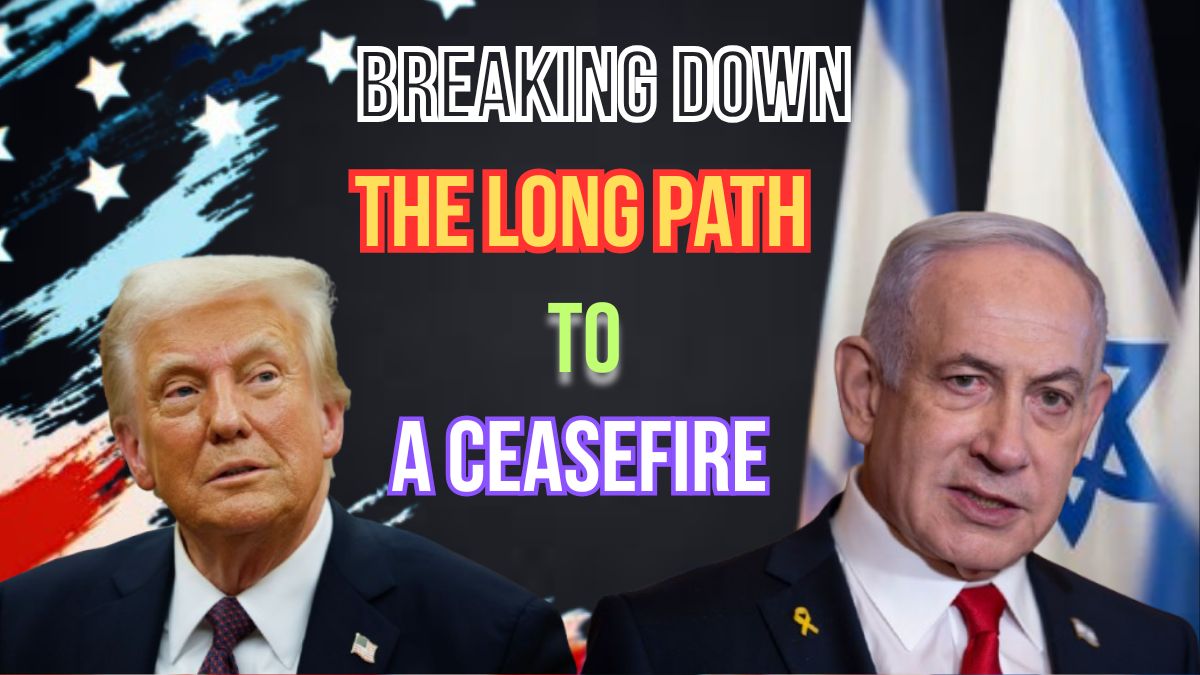Since October 2023, the Gaza war has escalated into a devastating and ongoing humanitarian crisis marked by violence, displacement, and political stalemates. The 20-month conflict has claimed over 56,000 lives, including a significant number of women and children. Amid calls for a ceasefire from global leaders such as U.S. President Donald Trump, efforts to negotiate a truce remain mired in complexities.
This post provides a clear breakdown of the key players, obstacles, and movements in the Gaza ceasefire talks, offering valuable insights into this prolonged conflict.

Content Body
The Context Behind the Gaza War
The conflict began with an attack by Hamas militants on October 7, 2023, in which approximately 1,200 people were killed, and 250 hostages were taken. Israel’s retaliatory military campaign left Gaza’s urban landscape in ruins, displacing much of its population repeatedly.
The conflict has not only introduced widespread casualties but also created challenges for humanitarian efforts and raised significant political dilemmas for involved parties.
Trump’s Role in the Ceasefire Efforts
President Trump has consistently called for an immediate ceasefire, recently urging, “MAKE THE DEAL IN GAZA. GET THE HOSTAGES BACK!!!” on his social media platform. Trump’s engagement in the talks has reportedly pushed forward potential agreements, with Israeli Prime Minister Benjamin Netanyahu expected to visit Washington, D.C., for further discussions.
While the U.S. administration attempts to bring both Israel and Hamas to the negotiating table, an earlier eight-week ceasefire in early 2025 fell through before solidifying into a long-term agreement.
Current Obstacles in Ceasefire Talks
Ceasefire negotiations have been fraught with challenges, particularly as both sides present non-overlapping demands.
Israel’s Stance
Israel insists on:
- Hamas disarming and relinquishing control over Gaza.
- Hostages being returned before initiating a ceasefire.
This position remains non-negotiable for Israeli officials.
Hamas’s Stance
Meanwhile, Hamas demands:
- An immediate and full withdrawal of Israeli troops from Gaza.
- No conditions for disarmament.
Their refusal to exile key leaders makes their terms equally rigid.
Humanitarian Catastrophe
Human rights organizations describe an escalating humanitarian crisis:
- Over half of Gaza’s population has been displaced.
- Food scarcity has led to chaos, with hundreds killed at aid centers.
Signs of Progress and Continued Challenges
Recent actions signal potential breakthroughs:
- Netanyahu’s anticipated Washington visit reflects promising movement.
- Strategic Affairs Minister Ron Dermer’s current visit aims to lay groundwork.
Still, these diplomatic engagements require trust-building amidst accusations, like Trump’s criticism of Netanyahu’s ongoing corruption trial hindering ceasefire efforts.
Public and International Responses
Public Outcry
The prolonged conflict has triggered protests:
- Demonstrators in Israel demand the release of hostages and a swift end to the violence.
- Palestinian representatives call for global attention to address their suffering.
Humanitarian Agencies
Groups like the UN and Doctors Without Borders condemn the dire conditions in Gaza, pressing for immediate safeguards for distributing food aid and essential supplies.
The Path Forward
Ceasefire talks and humanitarian efforts are more urgent than ever. Both political leaders and the global community must remain invested in negotiations that not only secure a ceasefire but also address the root causes of this devastating conflict.
Actionable next steps for the international community include:
- Mediating agreements that ensure safety and trust among the negotiating parties.
- Providing unbiased platforms for continued dialogue.
Developments in these areas could transform the fragile dynamics at play, offering hope for a durable peace in Gaza.
For those who want to stay updated on this critical issue, remember to follow established news outlets and humanitarian organizations working in Palestine and Israel.
Frequently Asked Questions (FAQs)
1. What is the main cause of the conflict in Gaza?
The conflict in Gaza primarily stems from a long history of territorial disputes, political tensions, and socio-economic inequalities between Israelis and Palestinians. Issues surrounding borders, security, and the status of Palestinian refugees contribute significantly to the complexity of the situation.
2. Are humanitarian efforts making a difference in Gaza?
Humanitarian organizations are making efforts to provide aid, such as access to food, clean water, and medical supplies. While these efforts alleviate some suffering, long-term solutions require political agreements that address the root causes of the conflict.
3. How can international interventions help bring peace to Gaza?
International interventions can provide mediators, foster dialogue, and create frameworks for conflict resolution. They can also ensure that aid reaches those in need and pressure involved parties to abide by international laws and agreements.
4. What are the main obstacles to achieving peace in Gaza?
Deep mistrust between the parties, recurring violence, differing political agendas, and unresolved historical grievances are some of the main obstacles hindering peace efforts.
5. How can individuals contribute to supporting peace and humanitarian efforts in Gaza?
Individuals can support by staying informed, sharing verified information to raise awareness, donating to reputable organizations providing aid, and advocating for peaceful resolutions through petitions and contact with policymakers.
For More Information Click Here